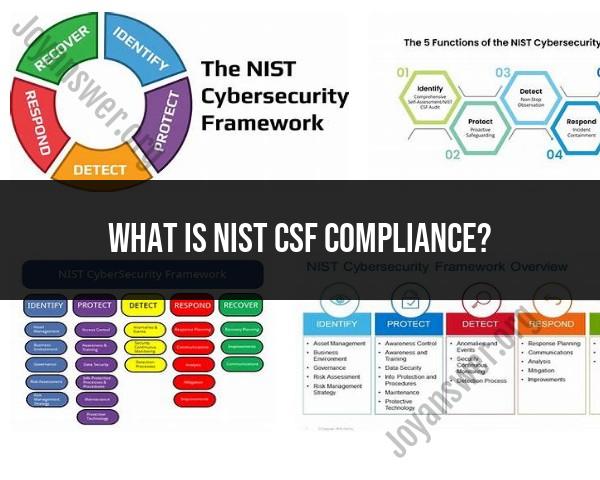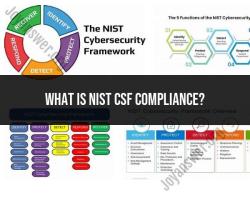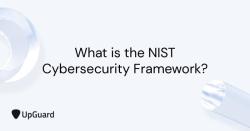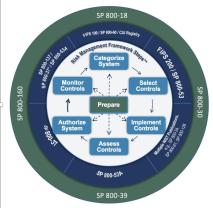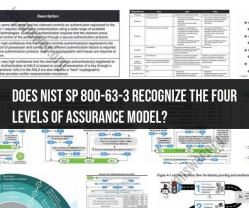What is NIST CSF compliance?
NIST CSF compliance refers to the adherence to the Cybersecurity Framework (CSF) developed by the National Institute of Standards and Technology (NIST). The NIST CSF is a set of guidelines, best practices, and standards designed to help organizations manage and improve their cybersecurity posture. It provides a framework that organizations can use to assess and strengthen their cybersecurity capabilities, manage cybersecurity risk, and enhance overall cybersecurity resilience.
Key components of the NIST CSF include:
Functions:
- Identify: Develop an understanding of cybersecurity risks to systems, assets, data, and capabilities.
- Protect: Implement safeguards to ensure the delivery of critical infrastructure services.
- Detect: Develop and implement activities to identify the occurrence of a cybersecurity event.
- Respond: Develop and implement activities to take action regarding a detected cybersecurity incident.
- Recover: Develop and implement activities to restore capabilities or services that were impaired due to a cybersecurity incident.
Categories:
- Within each function, the NIST CSF provides specific categories that represent key cybersecurity activities. For example, under the "Protect" function, categories include access control, data security, and training and awareness.
Subcategories:
- Subcategories provide additional details and refinement within each category. They further break down specific activities that organizations should consider implementing.
Informative References:
- The framework includes informative references, such as existing standards, guidelines, and practices that align with each category and subcategory.
NIST CSF compliance involves organizations adopting and implementing the framework to enhance their cybersecurity risk management practices. It's a voluntary framework that organizations across various sectors, including government, critical infrastructure, and private industry, can use to improve their cybersecurity resilience. While compliance with the NIST CSF is not mandatory, it is often recommended as a best practice for organizations looking to establish a robust cybersecurity program.
Organizations can use the NIST CSF to assess their current cybersecurity posture, identify areas for improvement, and establish a roadmap for enhancing their cybersecurity capabilities. Additionally, compliance with the NIST CSF can be relevant for organizations subject to regulatory requirements or industry standards that reference or incorporate the framework.
What is the significance of NIST CSF compliance?
NIST Cybersecurity Framework (CSF) compliance holds significant value for organizations of all sizes and across various industries. Here's a breakdown of its key importance:
Enhanced Cybersecurity Posture:
- Reduced Risk: Following the CSF's best practices helps identify and mitigate cybersecurity vulnerabilities, leading to a more secure environment and a reduced risk of cyberattacks.
- Improved Incident Response: The framework guides organizations in developing effective incident response plans and procedures, enabling them to react swiftly and effectively to security breaches.
- Proactive Approach: Adopting the CSF fosters a proactive approach to cybersecurity, enabling organizations to anticipate and address potential threats before they materialize.
Enhanced Business Resilience:
- Resilience against Disruptions: By strengthening cybersecurity, organizations become more resilient against cyberattacks and other disruptions, minimizing potential damage to operations and reputation.
- Increased Business Continuity: Robust cybersecurity measures safeguard critical data and systems, ensuring business continuity and minimizing downtime, even in the event of an attack.
- Compliance and Regulations: Implementing the CSF can help organizations comply with various industry regulations and legal requirements related to data security and privacy.
Improved Operational Efficiency:
- Streamlined Processes: The CSF provides a systematic and organized approach to cybersecurity, improving efficiency and streamlining security-related processes.
- Cost Savings: Proactive cybersecurity measures can help prevent costly data breaches and security incidents, leading to significant cost savings in the long run.
- Improved Communication and Collaboration: The framework promotes better communication and collaboration between different departments within an organization regarding cybersecurity, fostering a more unified approach to security.
Additional Benefits:
- Increased Trust and Confidence: Demonstrating commitment to cybersecurity through CSF compliance can boost investor and customer trust, leading to improved brand reputation and competitive advantage.
- Employee Security Awareness: Implementing the CSF raises awareness of cybersecurity best practices among employees, fostering a more secure culture within the organization.
- Flexibility and Scalability: The framework is designed to be flexible and adaptable to the specific needs and resources of each organization, making it suitable for businesses of all sizes.
It's important to note that NIST CSF compliance is not mandatory for most organizations. However, its significance lies in the comprehensive and best-practice guidance it provides, making it a valuable tool for any organization seeking to improve its cybersecurity posture, enhance operational efficiency, and build trust with stakeholders.
I hope this clarifies the importance of NIST CSF compliance! Let me know if you have any further questions.
